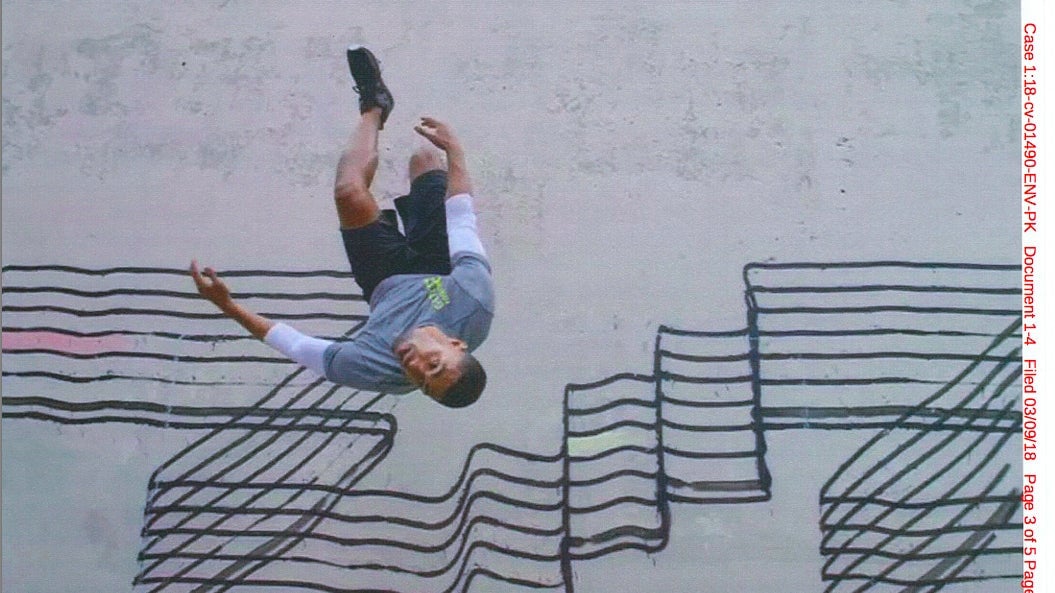H&M made a big mistake going after a graffiti artist
On the wall of a handball court in Brooklyn is a distinctive piece of art created by the graffiti artist Jason Williams, who goes by the name Revok. It looks a bit like a staff in musical notation, squiggling and twisting up and down the wall.


On the wall of a handball court in Brooklyn is a distinctive piece of art created by the graffiti artist Jason Williams, who goes by the name Revok. It looks a bit like a staff in musical notation, squiggling and twisting up and down the wall.
H&M chose to feature Williams’ artwork as the backdrop in a shoot to promote its New Routine activewear line. When Williams saw the ad, he wasn’t happy, and he embarked on a battle that wound up pitting a fast fashion mega-chain against the rights of street artists.
An attorney for Williams first contacted the company, claiming copyright infringement since Williams had never given H&M permission to use his artwork. But H&M fired back, claiming that it didn’t need permission, since Williams had painted the wall illegally. In fact, before H&M shot the video, it asked the New York City parks department if the graffiti belonged to a particular artist, to which a parks representative replied: “This graffiti should NOT have been on the hand ball [sic] wall. Whom ever placed this on the wall caused me to fail this feature when inspected last week.”
Ultimately, H&M filed a suit asking for a judgment declaring that Williams does not own any copyright on work that was painted without the city’s permission. What it wound up getting was serious heat from artists and others online who thought H&M was using a loophole to steal Williams’ work, potentially setting a bad precedent in court. H&M has now withdrawn the suit voluntarily.
Supporters of Williams had been publicly calling for a boycott of the Swedish fast-fashion label on social media, which is probably not the sort of attention H&M wanted just a couple months after a much more damaging misstep. In January, it pulled a product image and sweatshirt for kids that many called out as racist and derogatory toward black people. In anger, South Africans trashed H&M stores. H&M had originally issued a somewhat halfhearted apology, but followed up with a statement that showed it was truly sorry.
Now, here it was again, trying to backtrack and control the anger coming its way at a time when its sales are already floundering. People have even vandalized some H&M stores—with graffiti, of course.
While the public made its opinion known, the question of whether H&M was within its legal rights or not to use Revok’s work is a tricky issue. “There is nothing in the copyright act that says art that is illegally created can’t be subject to copyright, so technically, yes it should be,” Susan Scafidi, director of the Fashion Law Institute at Fordham Law School, told AdAge, “but if you take the vandalism perspective, then it’s understandable why this would rub some the wrong way.”
A similar case occurred a few years ago when graffiti artist Rime took issue with Italian fashion label Moschino and its designer, Jeremy Scott, for using an image almost identical to one in his work. As in this case, Moschino argued that Rime didn’t have any legal right to work he painted illegally on buildings. The case was eventually settled and the suit dropped.
Last month, however, a New York federal court issued a landmark ruling stating that graffiti can deserve legal protections. The real-estate developer that tore down 5pointz, a warehouse that had been turned into a de facto public art gallery, to make way for condos was ordered to pay $6.75 million for destroying 44 art works of recognized stature.
Would that precedent have protected Revok here? H&M wasn’t willing to risk more ire to find out.